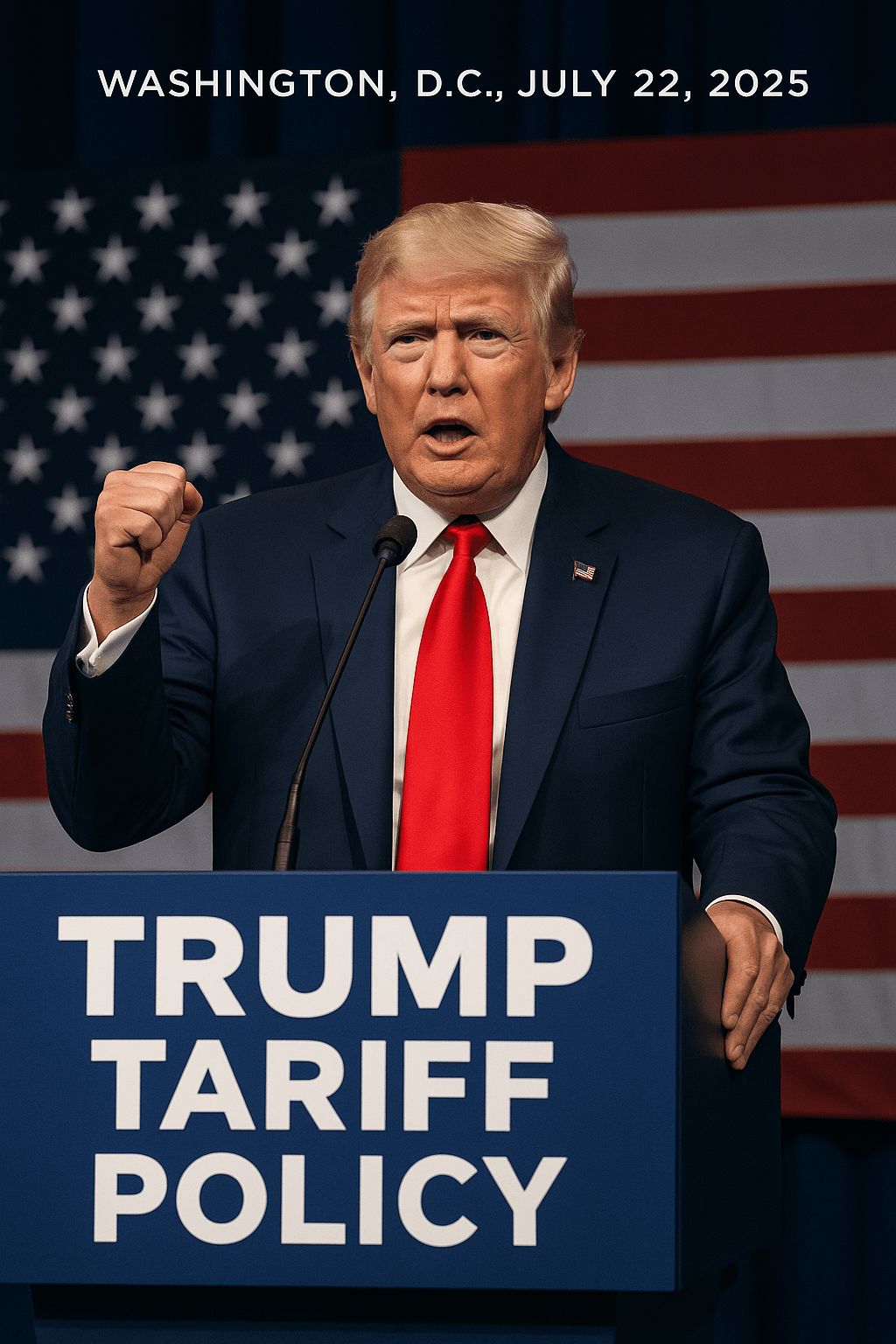Former President Donald J. Trump has officially reignited his Trump 2026 campaign, and he’s doing so with a familiar and controversial tool: tariffs. The Trump Tariff Policy is back at the center of U.S. economic discourse, aiming to reset America’s trade relationships, protect domestic industries, and strengthen national manufacturing. But critics warn it could spark a global trade war in 2026, increase consumer prices, and place a heavy burden on American households.
In a fiery speech delivered at a campaign event in Ohio, Trump outlined a sweeping new U.S. trade policy anchored in universal tariffs on imports. The former president proposed a 10–15% base tariff on goods from over 150 countries, unless those nations renegotiate bilateral trade deals favorable to the United States.
A New Era of Protectionism: Trump Tariff Policy
The Trump Tariff Policy marks a return to hardline economic nationalism, echoing his previous trade war tactics from his first term. However, Trump now insists this version is “smarter, stronger, and more American than ever.” According to his campaign, nations heavily reliant on U.S. markets — including China, India, and Brazil are expected to receive formal notification letters by August 1, demanding renegotiated trade agreements or face immediate tariff impositions.
“We are done being the world’s piggy bank,” Trump declared, flanked by Vice President J.D. Vance and Commerce Secretary Howard Lutnick. “The American worker will no longer be sacrificed on the altar of globalism.”
Investor Reactions and Economic Forecasts
Markets reacted cautiously. While Wall Street indices held steady after the announcement, analysts warn that even modest tariffs could strain growth. The economic impact of tariffs could reduce U.S. GDP by 0.2% to 1.3%, according to estimates from the Tax Foundation. Economists also warn of inflationary pressures, particularly in the retail, automotive, and tech sectors.
The so-called “TACO” trade — shorthand for “Trump Always Chickens Out” — is becoming a popular refrain among global investors who believe Trump may pull back on the harsher policies once in office. Still, financial institutions and central banks are closely watching as trade policies take shape.
Legal Hurdles and Congressional Pushback
Despite Trump’s aggressive timeline, his tariff policy faces significant legal obstacles. A federal court recently blocked his attempt to invoke the International Emergency Economic Powers Act (IEEPA) for trade purposes, citing executive overreach. Trump has vowed to bypass such rulings by leveraging Section 301 and Section 232, along with the Trade Review Act, which may soon face amendments in Congress.
Lawmakers are divided. While Republican allies support Trump’s push for trade reform, Democrats are warning that Trump import tariffs could function as a hidden tax on working families.
“This policy is not America First it’s America Alone,” said Senate Majority Leader Chuck Schumer. “We need to strengthen trade alliances, not isolate ourselves.”
Global Reactions and Rising Tensions
International leaders aren’t waiting for August 1 to respond. The European Union, Canada, and Mexico have already indicated they will consider retaliatory measures if U.S. tariffs are implemented. Meanwhile, US-China trade tensions are again escalating, with Chinese officials hinting at targeted restrictions on American tech companies and agricultural imports.
A senior diplomat from the European Commission warned, “If Trump proceeds, we will act decisively. The world cannot afford another trade war.”
At the same time, Trump’s team is quietly exploring “zero-tariff” trade deals with selected allies. Philippine President Ferdinand Marcos Jr. met with Trump earlier this month to discuss such an arrangement — a potential bright spot amid rising diplomatic friction.
Strategic Bet or Political Trap?
The Trump Tariff Policy is more than an economic maneuver — it’s a cornerstone of Trump’s 2026 campaign strategy. His messaging is clear: tariffs equal jobs, and globalism equals decline. Vice President Vance described the policy as “One Big Beautiful Bill” that will bring American factories roaring back to life.
However, policy experts caution this may be a risky gamble. If global trade war 2026 becomes reality, retaliatory tariffs could cripple export industries, disrupt supply chains, and undercut Trump’s core voter base — especially in agricultural states.
What’s Next?
With the August 1 tariff deadline approaching, the world is watching closely. Legal battles are unfolding in appellate courts. Congress may attempt to dilute Trump’s authority under trade law. Meanwhile, inflation indicators and GDP growth will be under scrutiny in the coming weeks.
Trump is betting big on a return to economic nationalism. Whether it boosts U.S. manufacturing or backfires amid global retaliation remains to be seen. One thing is clear: the Trump Tariff Policy is already reshaping the narrative for the 2026 election — and possibly the global economy.







